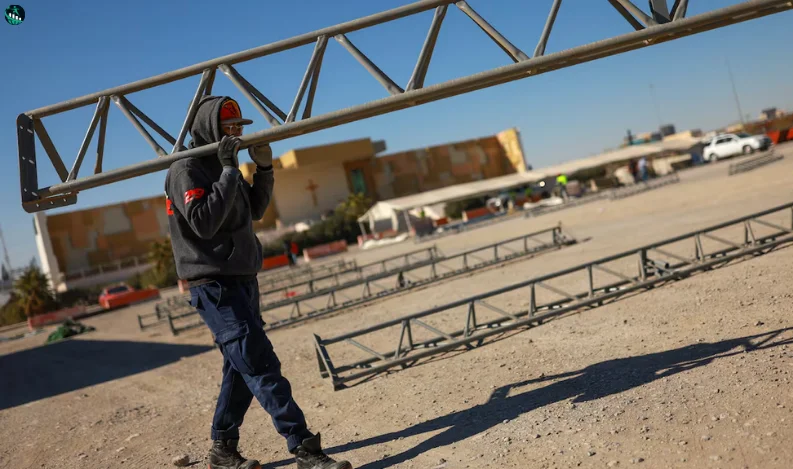
Mexico Constructs Emergency Shelters to Brace for U.S. Mass Deportations
Ciudad Juarez, Mexico – Amid U.S. President Donald Trump’s vow to execute the largest deportation operation in American history, Mexico is making urgent preparations to accommodate a potential influx of deportees.
Authorities in Ciudad Juarez, a major border city adjacent to El Paso, Texas, have begun building large temporary shelters capable of housing thousands. These facilities are part of a broader national strategy to address the anticipated deportations, municipal official Enrique Licon confirmed.
“It’s unprecedented,” Licon said on Tuesday as workers unloaded construction materials near the Rio Grande. The shelters, which should be operational within days, will provide deportees with food, temporary housing, medical care, and assistance with identity documentation under a government initiative titled “Mexico Embraces You.”
A Nationwide Strategy
The Mexican government plans to establish shelters and reception centers in nine northern cities to manage the potential crisis. Additionally, a fleet of buses will transport deportees from border cities to their hometowns, many of which are in regions plagued by violence and economic hardship.
Recent data from the Mexican think tank El Colegio de la Frontera Norte (COLEF) estimates nearly five million undocumented Mexicans currently reside in the United States. States such as Michoacan, Guerrero, and Chiapas, which have seen mass displacement due to organized crime, account for a significant portion of this population.
Challenges on Both Sides of the Border
While Mexican officials express readiness for mass deportations, immigration advocates and local authorities have raised concerns about the country's capacity to handle such an operation.
José Luis Pérez, a former migration official in Tijuana, warned that ending U.S. programs such as CBP One, which allowed migrants to legally enter the U.S. via app-based appointments, and reinstating the Migrant Protection Protocols (MPP), which requires non-Mexican asylum seekers to await U.S. case resolutions in Mexico, could overburden Mexican cities already struggling with limited resources.
“Basically, with the cancellation of CBP One and deportations, the government isn’t coordinated to receive them,” Pérez stated before being dismissed from his post.
Despite these concerns, Mexican Interior Minister Rosa Icela insisted on Monday that the government is prepared. “Mexico will do everything necessary to care for its compatriots and will allocate whatever is required to receive those who are repatriated,” she said during a press conference.
Economic and Humanitarian Implications
Experts warn that absorbing millions of deported individuals could strain Mexico’s economy, especially with sluggish growth projected for the year. Wayne Cornelius, an emeritus professor at the University of California-San Diego, highlighted that a sharp decline in remittances—an essential income source for many rural Mexican families—could further exacerbate economic instability.
In Ciudad Juarez, the sense of urgency is palpable. Soldiers worked late into Thursday evening to construct industrial kitchens at one of the new shelters. The site holds symbolic significance, situated near a black cross where Pope Francis prayed for migrants during a 2016 Mass, warning of a looming humanitarian crisis.
As the border braces for potential upheaval, questions remain about whether Mexico’s efforts will be enough to address the challenges of mass deportations and the social and economic ripple effects they will undoubtedly cause.



Recent Comments: